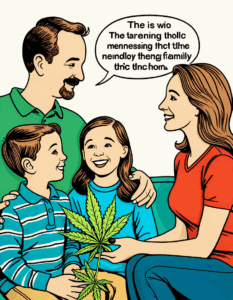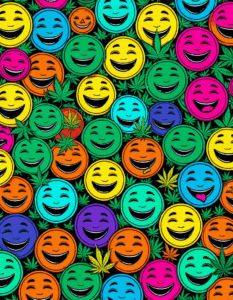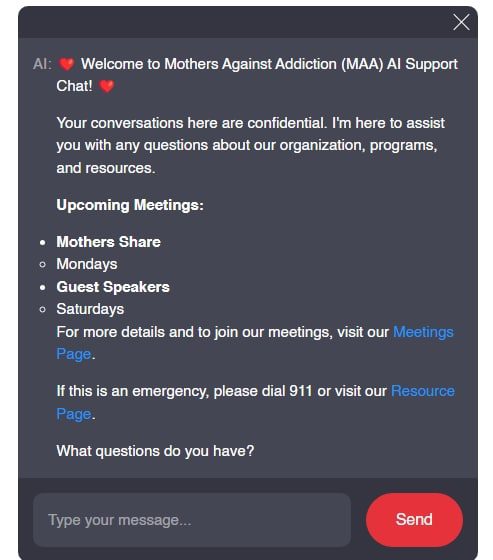Understanding the psychological disorders list is critical for parents looking to support their children effectively. As mental health awareness grows, being well-informed about various psychological and personality disorders becomes vital. This in-depth article explores significant mental disorders, their symptoms, and potential treatments. Our aim is to provide insights that you can use to create a nurturing environment for your children, especially those struggling with addiction. At Mothers Against Addiction, we recognize the profound challenges that parents face and are here to offer guidance and resources through your journey.

Top 7 Psychological Disorders Parents Should Know
1. Attention-Deficit/Hyperactivity Disorder (ADHD)
Overview: ADHD is a common disorder characterized by inattention, hyperactivity, and impulsivity. Kids with ADHD often face challenges in academics and daily interactions.
Symptoms: Signs include difficulty focusing, forgetfulness, restlessness, and interrupting others during conversations or activities. These symptoms can lead to struggles at home and school.
Treatment: Effective approaches often include behavioral therapy, counseling, and sometimes medication. Stimulants like Adderall and Ritalin are frequently prescribed to help regulate attention and reduce hyperactivity. Opening up conversations about ADHD can alleviate some stigmas associated with this disorder, allowing children to feel more understood.
2. Anxiety Disorders
Overview: Anxiety disorders are a category of mental health conditions that include Generalized Anxiety Disorder (GAD), Social Anxiety Disorder, and Panic Disorder. These can significantly impact a child’s everyday life.
Symptoms: Common signs include excessive worrying, avoiding social events, a racing heart, and panic attacks. Children may exhibit tummy aches or headaches due to anxiety.
Treatment: Cognitive Behavioral Therapy (CBT) proves effective in treating anxiety. Sometimes, doctors prescribe medications, like SSRIs such as Sertraline and Fluoxetine, to help manage symptoms. Talking to your child about their feelings can encourage them to open up.
3. Depressive Disorders
Overview: Major Depressive Disorder (MDD) and Persistent Depressive Disorder (Dysthymia) often appear in children and adolescents. These conditions impact their joy and willingness to engage in daily activities.
Symptoms: Affected kids may display low energy, changing sleep patterns, appetite loss, and feelings of worthlessness or hopelessness. Occasionally, these feelings could lead them to contemplate self-harm.
Treatment: Therapeutic methods like CBT and Interpersonal Therapy, combined with medication such as Escitalopram, can be quite effective. As a parent, recognizing these signs early can be the first step toward getting your child the help they need.
4. Autism Spectrum Disorder (ASD)
Overview: ASD is a developmental disorder that presents challenges in social skills, communication, and repetitive behaviors. Every individual with ASD is unique, with varying strengths and difficulties.
Symptoms: Signs may include limited eye contact, avoiding physical affection, and strict adherence to routines. Understanding your child’s perspective can help bridge communication gaps.
Treatment: Early intervention through behavioral therapies like Applied Behavior Analysis (ABA) can significantly enhance a child’s functional skills. Schools and community programs offer support designed for children facing these unique challenges.
5. Bipolar Disorder
Overview: Often misdiagnosed in younger populations, bipolar disorder affects mood stability, resulting in emotional highs (mania or hypomania) and lows (depression).
Symptoms: Kids with bipolar disorder may experience periods of extreme irritability, decreased need for sleep, rapid speech, and racing thoughts during manic episodes, followed by episodes of despair or hopelessness.
Treatment: Generally, mood stabilizers, such as Lithium, and therapy help manage symptoms and foster coping strategies. Keeping an open dialogue with your child about their feelings can help prevent misunderstandings.
6. Obsessive-Compulsive Disorder (OCD)
Overview: OCD is marked by unwanted, repetitive thoughts (obsessions) and the need to perform certain behaviors (compulsions) to alleviate anxiety.
Symptoms: Common compulsions include excessive hand-washing, checking, and counting rituals. These actions can take up significant time, impacting a child’s daily routine.
Treatment: Exposure and Response Prevention (ERP), a specialized form of CBT, helps manage OCD symptoms effectively, sometimes combined with medication like Clomipramine. Encouraging your child to voice their fears can facilitate understanding and support.
7. Personality Disorders
Overview: Personality disorders, such as Borderline Personality Disorder (BPD) and Antisocial Personality Disorder (ASPD), involve enduring behavior patterns that deviate from societal expectations.
Symptoms: BPD may include emotional instability, impulsive actions, and relationship difficulties, while ASPD may present as deceitfulness and disregard for societal norms.
Treatment: Dialectical Behavior Therapy (DBT) is effective for BPD, and individuals with ASPD often benefit from therapies that foster empathy and interpersonal skills. Providing a supportive environment at home can empower children to focus on their personal growth.

Raising Awareness and Taking Action
As parents, being cognizant of the psychological disorders list makes it easier to spot signs of distress in children and teens. This awareness empowers you to seek early intervention, offer support, and advocate for the right treatment. It’s essential to engage in open conversations about mental health, helping to reduce stigma and foster an environment where children feel safe expressing their struggles.
Integrating mental health education within school curriculums can significantly aid early identification and support. Encouraging schools to implement programs or workshops focused on mental health can boost understanding, ultimately reducing the prevalence of untreated psychological disorders. Tools like Quizle can engage children in understanding their emotional states.
Awareness translates to action. By recognizing symptoms early, you can connect your children with resources, including therapists and support groups. Building a community around mental health is vital for providing children the tools and knowledge they need to thrive.
In a world where understanding mental health is paramount, parents stand as the frontline advocates. By arming yourself with knowledge and fostering open, supportive dialogues, you pave the way for healthier futures for your children. Our role at Mothers Against Addiction is to stand with you, offering resources and support along the way. As you navigate this journey, remember, you are not alone.
Taking the time to educate yourself on the psychological disorders list can make all the difference. You are empowered to create an environment where your children feel safe, understood, and supported. Let’s stay informed and proactive together; after all, the future of our children depends on it.
Engaging Trivia About Psychological Disorders List
Understanding Psychological Disorders: A Glimpse into the Unknown
Did you know that psychological disorders affect millions of people worldwide? In fact, estimates suggest that nearly 1 in 5 adults experience mental illness at some point in their lives. That’s a staggering number! This emphasizes the importance of a thorough psychological disorders list for parents. These conditions aren’t just categories on paper; they’re real struggles that many face. For instance, personalities like Sean Berdy have openly shared their journeys, demonstrating how varied these experiences can be. Each disorder poses its unique challenges and can significantly impact daily life.
The Importance of Awareness and Resources
Resourcefulness is key when dealing with mental health issues. That’s where tools like the A.D.S. Library come into play—it’s a place for parents to find information and support. Plus, interactive platforms like Quizlet offer helpful study aids that can break down complex terms into more digestible bits. It’s fascinating how technology can bridge the gap between knowledge and understanding. Additionally, the entertainment industry often sheds light on these topics too. For example, characters portrayed by Garcelle Beauvais in movies frequently tackle mental health themes, reminding us that we are not alone in our battles. Recognizing these portrayals in media can encourage conversations about psychological disorders that need to happen at the kitchen table.
Fun Facts That Lighten the Heaviest of Topics
In the light-hearted realm of trivia, did you know that some actors, like those from the Justice League cast, have also struggled with mental health? Sharing their stories can demystify psychological conditions and promote empathy. Similarly, Carrie Brownstein, known for her wit, has been open about her mental health journey, reminding us that fame doesn’t shield one from struggles. Lastly, eating Disorders And their connection to societal expectations are crucial topics to discuss as well, particularly among the youth navigating these pressures. Recognizing the signs and understanding the psychological disorders list can empower parents to talk openly with their kids about what they’re feeling.
In wrapping this all up, understanding psychological disorders through engaging trivia and real-life accounts enriches our knowledge. It’s a way to not only educate ourselves but also to foster deeper connections within families. After all, a little knowledge can go a long way in providing the support that those we love often need most.




























